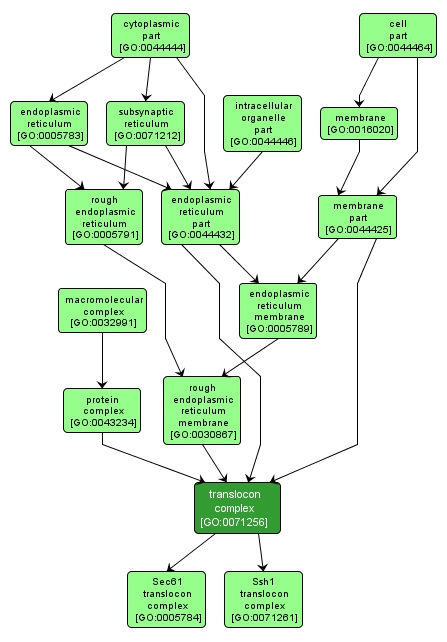| Desc: |
A protein complex that constitutes a specific site of protein translocation across the endoplasmic reticulum, which involves the signal recognition particle receptor. The complex contains a core heterotrimer of alpha, beta and gamma subunits, and may contain additional proteins. |














